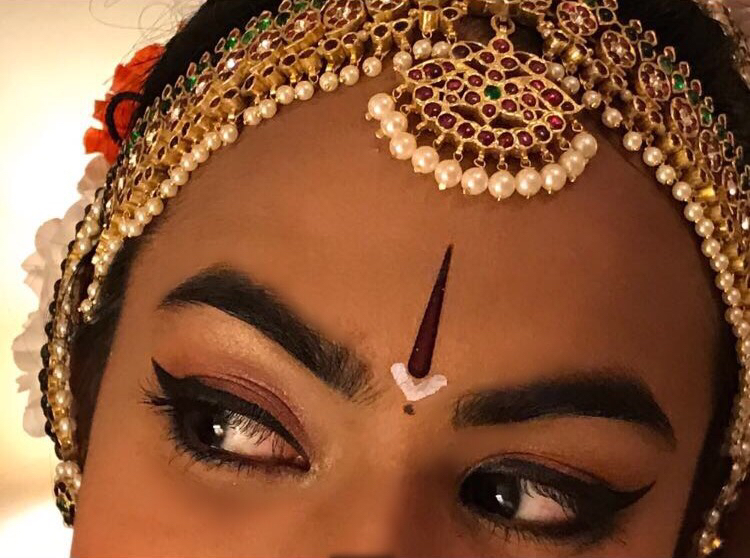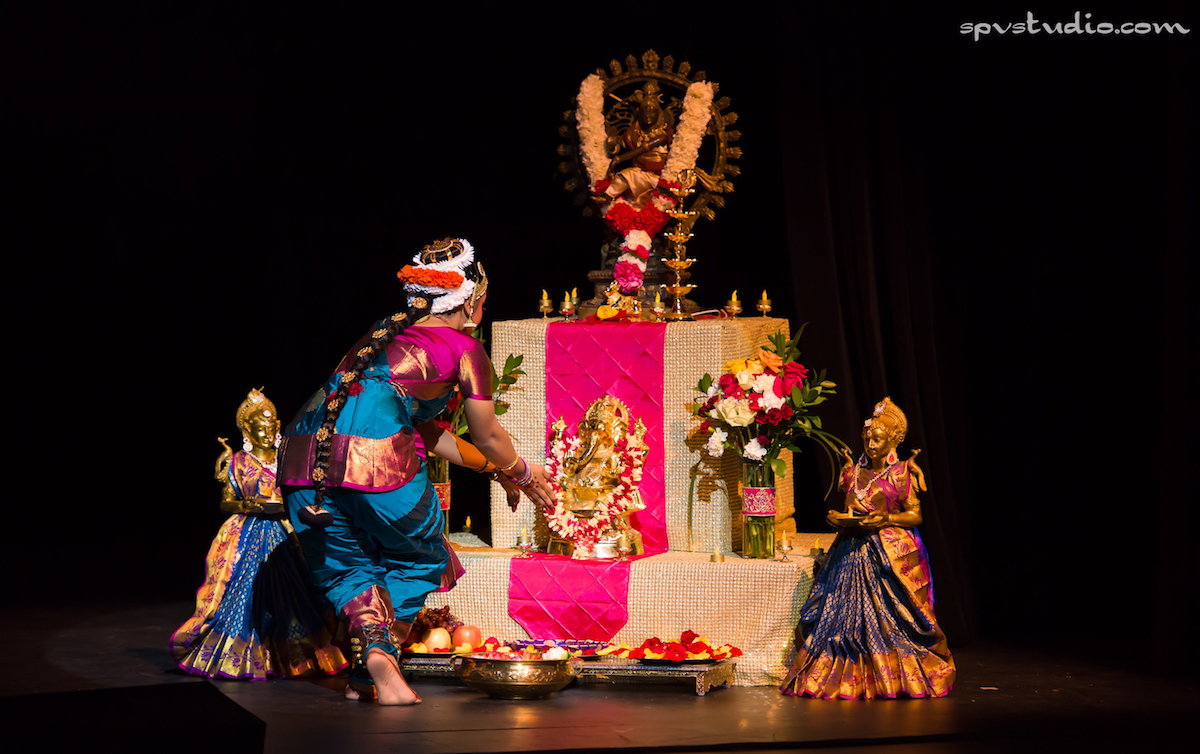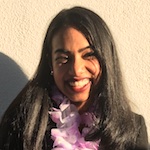
I was so nervous I could barely speak. From the trip to the temple to the drive to the auditorium, I barely spoke one word. On the outside, I must have seemed calm, composed, and in control. But in reality, I was scared if I started talking, everything would hit me at once and I would lose it.
I resorted to my mantra of that summer, “I can conquer the world” —five words of wisdom I got from my dance teacher’s mother that I still say to myself, a year later, when things don’t fit together like I want them to.
[Read Related: “In ‘Duality,’ Brown Girl Narratives Take on a New Form of Bharatanatyam“]
This was the day of my arangetram. My bharatanatyam “coming of age” or debut performance, complete with a year’s worth of practicing, insecurity, and complete joy. 365 days later, I regard this day of celebration with pride and as my biggest accomplishment. There is so much I have learned from my arangetram year and I could not be more grateful. These are three things I gained from my journey, which I still keep in mind today.
The Secret to Success
My dance teacher once shared this beautiful quote:
“Success is stumbling from failure to failure with no loss in enthusiasm.”
It’s cliche and it’s overdone, but it is completely accurate. To me, success starts with almost giving up. The key word is ‘almost.’ There were so many times when I thought I could not finish this. I convinced myself that I didn’t have the endurance or the ability to memorize the dance or the grace. Despite everything, I kept going even when my feet hurt, my muscles were sore, and my head wasn’t into it. My dad told me that if at first you don’t succeed, try, try, try again. So I tried. And I tried. And I tried some more and somehow I did it.

Fake it ‘til you make it—or not
We act as if confidence is the easiest characteristic to have. It is a surface-level necessity for those who reach great heights; however, during this time of my life, my confidence was paper thin. People used to tell me to “fake it ‘til you make it.” However, every time I tested this method, my “confident” manner seemed out of place and tasted funny in my mouth. My “I can conquer the world” attitude gave me confidence and convinced me to believe in myself.
A year later, I still struggle with my confidence. It didn’t stick around. As if performing an arangetram is some magic cure to insecurity. The difference is that now I don’t let insecurity handle my life, instead, I have the strength to push through and accomplish what I want.
Gratefulness and Appreciation
It took me way too long to realize that I have an amazing support system. My friends dealt with the ups and downs and were by my side the entire time. My arangetram sisters, the group of girls from my dance school who also completed an arangetram that summer, were basically my rock. They understood what I was going through and were there with me from the temple performances (with IHOP afterward) to backstage on my arangetram day.
My dance teacher did not give up on me, even though I would have expected anyone to, and was always available with a million inspirational quotes. I wouldn’t be where I am today without her. Lastly, I have more than incredible parents. My dad told me every dance I practiced was amazing, even when they clearly weren’t, and my mom facilitated every detail from jewelry to decor with absolute grace. I don’t think I could ever repay them for what they have done for me.
So yes, it’s been one year since my greatest achievement thus far, and to this day I look back in awe and thankfulness for all that I have accomplished and gained through bharatanatyam.
 Sriya Reddy is currently a senior in high school, but is attending Southern Methodist University in Dallas for the next four years. She is planning on pursing the Pre-Medicine alongside a Journalism major. Reddy is active in her high school’s publication, the Plano West BluePrints and also a bharatanatyam dancer. She is hoping to have a future in medical journalism. Some of her hobbies include writing, taking buzz feed quizzes, and going to museums.
Sriya Reddy is currently a senior in high school, but is attending Southern Methodist University in Dallas for the next four years. She is planning on pursing the Pre-Medicine alongside a Journalism major. Reddy is active in her high school’s publication, the Plano West BluePrints and also a bharatanatyam dancer. She is hoping to have a future in medical journalism. Some of her hobbies include writing, taking buzz feed quizzes, and going to museums.




